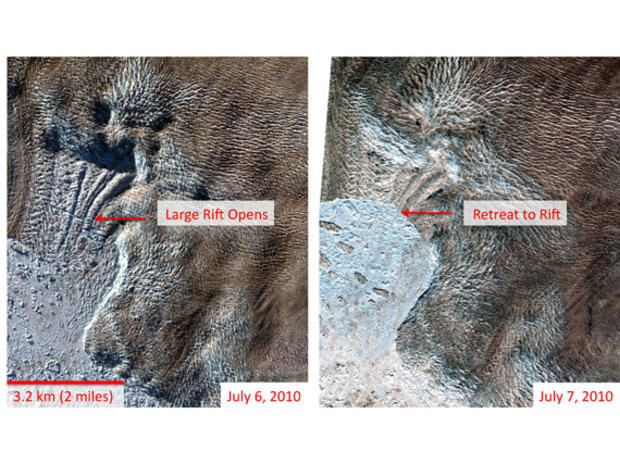Glacier Loses Ice Chunk Equal to One-Eighth of Manhattan
Greenland's Jakobshavn Isbrae glacier broke up on July 6 and 7, pushing the point where the ice sheet meets the ocean further inland than at any time previously observed, NASA-funded researchers said. As much as 10 percent of all ice lost from Greenland comes through Jakobshavn, which scientists also believe to be the single biggest contributor to sea level rise in the northern hemisphere.
This is part of a recent trend which scientists say started around the beginning of this decade. Between 1850 and 1964, the glacier's ice front had retreated at about 0.3 kilometers a year. It then stayed that way until 2001 when the decrease began to accelerate at about 3 km/yr. (For more on the Jakobshavn Glacier Calving Front, click here.)
Thomas Wagner, cryospheric program scientist at NASA noted that while there have been ice breakouts of this magnitude from Jakonbshavn and other glaciers before, he described this event as "unusual because it occurs on the heels of a warm winter that saw no sea ice form in the surrounding bay." "While the exact relationship between these events is being determined, it lends credence to the theory that warming of the oceans is responsible for the ice loss observed throughout Greenland and Antarctica," he said.
In February, NASA scientists reported that west Greenland's glaciers were melting 100 times faster at their end points beneath the ocean than at their surfaces. The likely explanation behind the undersea melting: warmer ocean waters.
